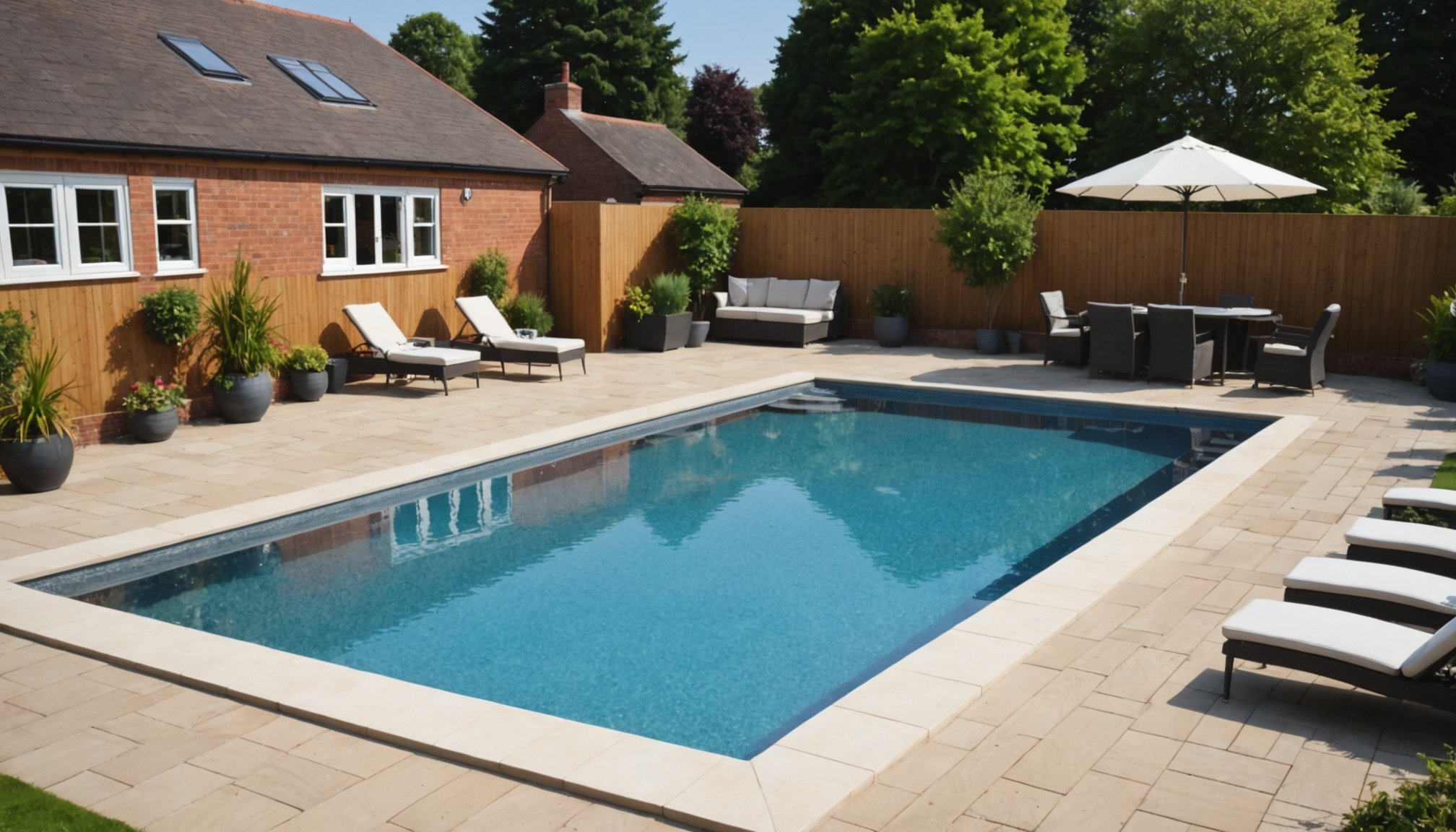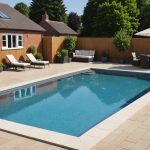Innovative Design Ideas for Spa Integration
When it comes to enhancing your outdoor oasis with creative spa designs, the integration with existing pool layouts is key. Contemporary spa features are crafted to complement pool areas by seamlessly blending design elements. This integration not only enhances the visual appeal but also elevates the overall relaxation experience.
Opting for popular materials and finishes like natural stone and wood can help create a cohesive look. These materials are not only aesthetically pleasing but also durable, ensuring longevity. Using textures that echo those in the pool area results in a harmonious visual flow.
Cela peut vous intéresser : The Ultimate Guide to the Best Season for Pool Installation in the UK
Themed spa areas offer a unique way to transform your space. Picture a tropical retreat with lush greenery and bamboo accents, or a Zen-inspired sanctuary featuring minimalistic designs with calming water features. Such themes do more than just enhance relaxation; they create an immersive environment.
By focusing on spa features that complement rather than compete with your pool integration, you enable a tranquil retreat right in your backyard. This approach ensures that the spa becomes a natural extension of your pool, providing a holistic and unified design.
Lire également : Essential Factors for Harmonizing Your Pool Design with Contemporary UK Architectural Trends
Practical Considerations for Installation
Navigating a spa installation or pool modification journey requires meticulous planning and execution, especially when it comes to practical considerations. Before diving into the renovation, it is essential to first assess the space requirements. This step determines if the available area is suitable for hosting a new spa or accommodating a pool upgrade. Considerations include the layout, proximity to utilities, and ensuring there is ample space for both equipment and users to comfortably enjoy the area.
Assessing Space Requirements
Understanding the dimensions and constraints of your existing premises is crucial. Ensure there’s sufficient clearance around the spa or pool and that load-bearing surfaces are considered. This allows for seamless integration without structural issues, preventing complications later on.
Understanding Local Regulations
The success of your project also depends heavily on adhering to UK regulations that govern such installations. These include permissions such as planning consents, compliance with safety codes, and environmental considerations. Overlooking these can lead to legal troubles and project delays; thus, understanding these rules is paramount.
Collaborating with Professionals
Partnering with skilled contractors who are experienced in pool and spa installations is imperative for a successful project. They bring valuable insights and meticulous expertise to ensure every aspect from design to implementation aligns with your vision and fulfills all regulatory requirements specific to the UK.
Budgeting for Your Spa Area
Creating a luxurious spa area at home often begins with understanding spa costs. It’s crucial to break down the potential cost components to manage expenses effectively. Key elements include construction materials, equipment, design fees, and ongoing maintenance.
Start with a realistic budget planning strategy by prioritising needs over wants. Consider what you already have versus what must be purchased, and anticipate all expenses you might incur. This could mean choosing eco-friendly materials, which might be pricier upfront yet cost-effective in the long run.
Implementing financial considerations, such as setting a fixed budget limit, ensures that spending stays in control. Before commencing construction, thorough research and gathering multiple quotations can reveal considerable savings.
Here are a few cost-saving tips for constructing your spa:
- Opt for locally sourced materials that reduce transport costs.
- Invest in energy-efficient appliances to lower future utility bills.
- Consider DIY projects for non-essential features, which could reduce labour costs.
Think beyond present expenses and prepare for ongoing maintenance. Planning a contingency fund within your budget can offer peace of mind when unexpected costs arise. By approaching each element with diligence and foresight, you can create your tranquil retreat without financial strain.
Choosing Features for Your Spa Area
Designing a spa involves integrating luxury elements, considering spa features, and exploring customization options to create an ideal relaxation haven. Delving into these areas ensures a truly rejuvenating experience.
Types of Spa Pools
Selecting the right type of spa pool is pivotal as it forms the core of your spa. Luxury spa pools, encompassing various designs, offer distinct benefits. You can go for a conventional hot tub for hydrotherapy benefits or opt for a swim spa that combines therapeutic features with exercise space. These spa types come with various customization options, allowing you to tailor features like temperature control and jet strength to personal preferences.
Accessories for Enhanced Experience
Accessories elevate your spa experience to a new level of opulence. Consider adding high-tech sound systems, ambient lighting, or waterfalls. These elements provide multi-sensory stimulation and ultimate relaxation. Customization options let you choose accessories that synchronize with your spa’s theme, whether it’s tranquility or rejuvenation.
Eco-friendly Options
Incorporate sustainable options to design an environmentally friendly spa. Opt for solar-powered heating systems or water-efficient pumps that align with eco-conscious choices. Eco-friendly spa features not only reduce your environmental footprint but also cut down on operational costs, blending luxury with sustainability effectively.
Maintenance Tips for Your New Spa Area
Maintaining your spa requires a dedicated approach to ensure its longevity and enhance your relaxation experience. Adhering to essential spa maintenance routines can simplify this task.
Essential Routines: Regularly check water pH levels to maintain balance, typically between 7.2 and 7.6. This prevents damage and ensures user comfort. Cleaning filters is crucial; it’s recommended to do so every two weeks. Additionally, sanitising surfaces and essential parts, like jets, keeps the spa in optimal condition.
Challenges in UK Climates: The frequent rain and fluctuating temperatures can affect your spa. To combat these challenges, invest in a quality cover to shield the spa from debris and weather threats. It’s also beneficial to periodically inspect for mould or algae in your pool upkeep routine.
Ensuring your spa operates efficiently might necessitate professional help. Look for local maintenance service providers with expertise in conservatory and spa upkeep to handle any complex issues. Companies specialising in these services often conduct more comprehensive checks and employ advanced cleaning techniques, ensuring your spa remains in impeccable shape.
Incorporate these care tips into your regimen, and you’ll likely enjoy a well-functioning and aesthetically pleasing spa area for years.






